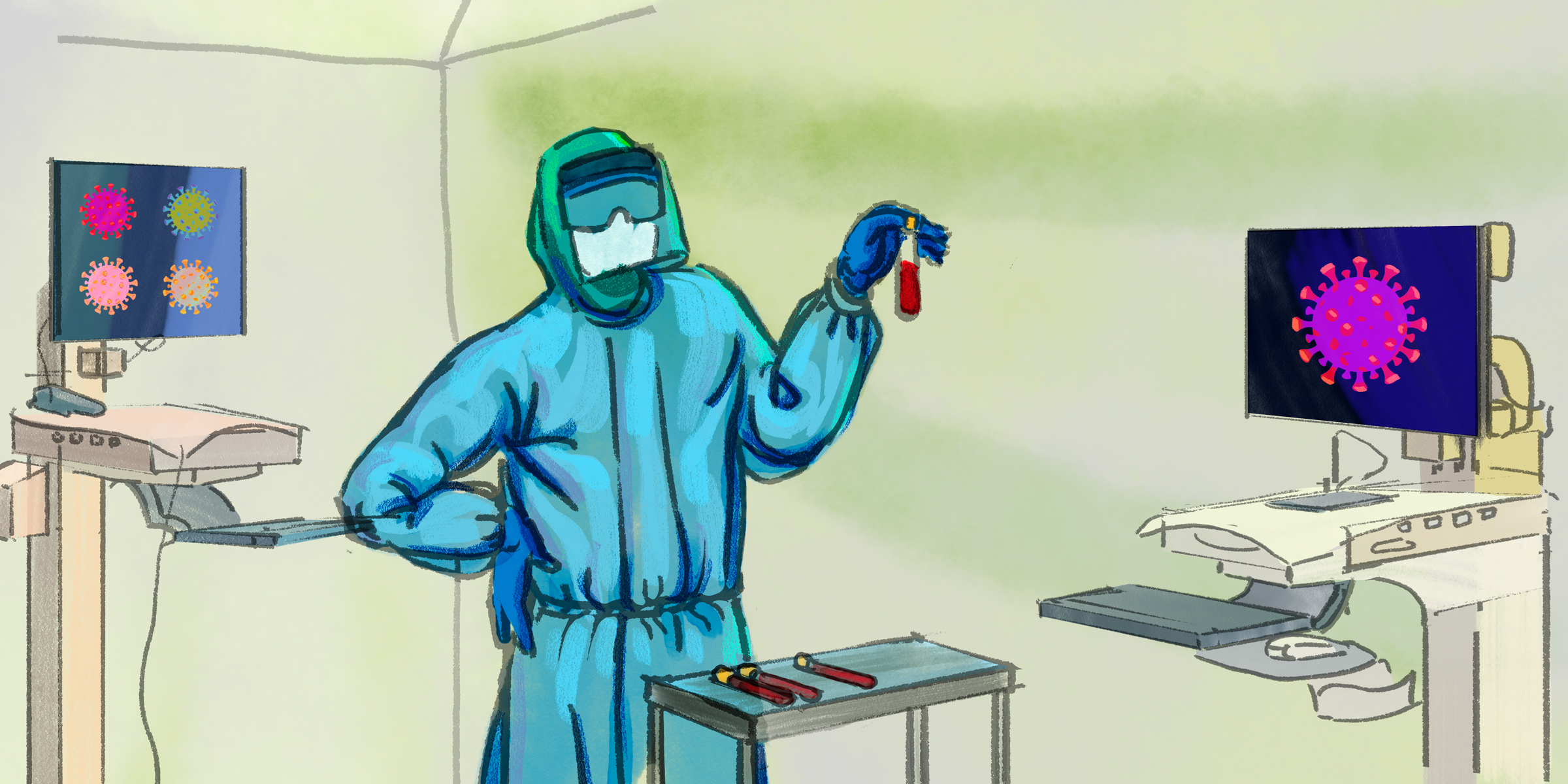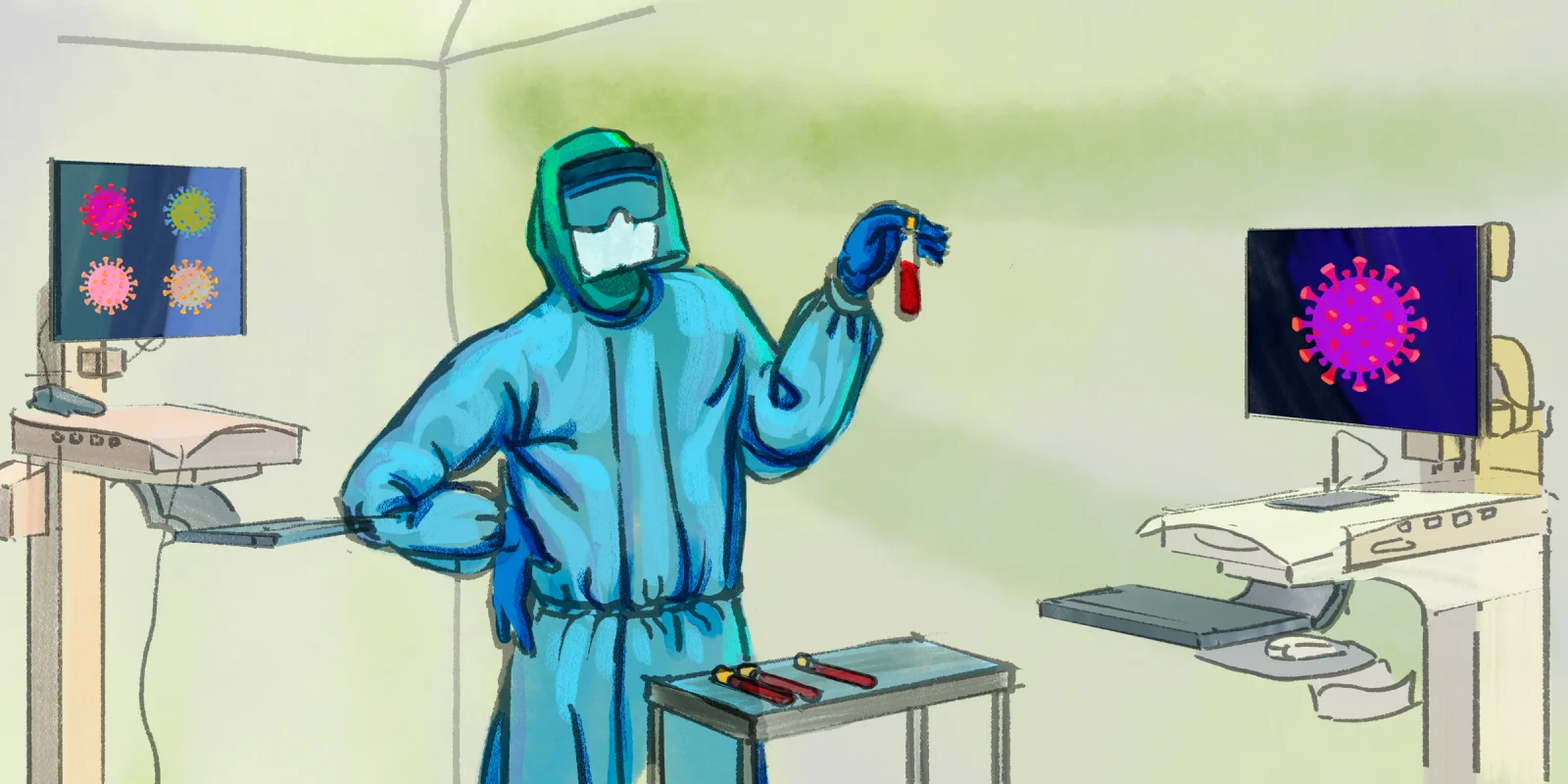 The International AIDS Society held its Virtual COVID-19 Conference on July 10–11, 2020, following the 23rd International AIDS Conference.
The International AIDS Society held its Virtual COVID-19 Conference on July 10–11, 2020, following the 23rd International AIDS Conference.
The opening session, “Making Sense of the Science,” included Dr. Anthony Fauci, the director of the National Institute of Allergy and Infectious Diseases; Professor Salim Abdool Karim, the director of the Centre for AIDS Programme Research in South Africa; and Dr. Deborah Birx, the White House Coronavirus Response Coordinator.
Dr. Fauci reviewed “The Research Response to COVID-19.” Up to 45% of new COVID-19 infections are transmitted by people who are either pre-symptomatic or asymptomatic. He relayed that this complicates our efforts for diagnostic testing, contact tracing, and isolation, all major public health interventions.
Prof. Karim discussed “The Prevention Paradigm” and elaborated on the role of testing as a part of the “prevention toolbox.” Both presenters agreed that testing plays a role in preventing virus transmission when tied to interventions such as contact tracing, isolation, and quarantine.
Lastly, Dr. Deborah Birx presented an overview of statistical measures that help us better understand and manage the pandemic. She said that the United States consists of multiple state, regional and/or local epidemics, leading to geographic variability in patterns of infection. These data trigger public health interventions and help manage these distinct epidemics. This granularity may be better than observations on the ground, allow for more timely trendspotting, and help to optimize response coordination. Despite the numerous challenges with this level of detail, her presentation was crystal clear: COVID-19 testing is critical to managing the pandemic.
Beyond its value on a local level, the role of diagnostic testing will become clearer when there are drugs to treat or prevent COVID-19: the “test and treat” paradigm. In other words, we need to do more, not less, COVID-19 diagnostic testing. In the meantime, contact tracing, deploying personnel to hotspots, adding testing resources, and supporting public health agencies are some examples of current interventions.
Two data signals drive resource allocation, the first is the rate of test positivity, where the numerator is the number of positive tests and the denominator is the number of tests performed. According to the WHO, a positivity rate greater than 5.0% indicates ongoing community transmission. Ideally, testing programs should target a positivity rate of 1-2% or less. The number provides a gauge on testing in a locality. Rates higher than 5% (e.g., 15-20% or higher) suggest that only the sickest patients are being tested and that people with milder illness, or asymptomatic/presymptomatic people are missed. The second data signal is the rate of change. This is the number of cases being identified over time. This is a more dynamic measure that looks at changes in patterns of infection over a period of time (e.g. weekly, 7-day rolling average, or other intervals) to gauge infection dynamics.
In another symposium, “Test, Test, Test: COVID-19 and HIV Testing Updates,” Dr. Jerome Kim, the Director General of the International Vaccine Institute, reviewed South Korea’s robust public health infrastructure and that country’s approach to COVID-19. His talk was aptly titled “Test, Track, Isolate and Treat: The End of COVID-19 in South Korea.”
While South Korea’s population is smaller than the United States (52 million vs. 320 million), their population density is considerably higher (516 vs. 33 people/ km2, respectively). Anecdotally, the United States and South Korea reported their first COVID-19 cases at the same time, around January 20, 2020.
South Korea’s COVID response is the result of missteps with the 2015 Middle East Respiratory Syndrome (MERS), where the country had the largest outbreak in the world outside of the Middle East. As a result, the country amended its Infectious Disease Control and Prevention Act and invested in its public health infrastructure and information technology to coordinate an earlier, more aggressive response to emerging infectious diseases.
Authority, actions, and interventions are based on the alert level. In the case of COVID-19, a Level 4 alert, public health leadership is vested directly with the Prime Minister. In this chain of command, the chief of the country’s Korean Centers for Disease Control (KCDC), a deputy minister, led pandemic’s scientific and communications efforts.
“The people were willing supporters of these policies,” he said. “Test, Track, Isolate and Treat” was the centerpiece of the intervention. Despite the country’s high population density, there were no formal lockdown or workplace closures, and schools were on winter recess. He stressed robust contact tracing, saying, “it’s not enough to know just the index case.”
Other interventions to stop virus transmission and encourage testing used information technology with smartphone apps. With built-in tracking systems, people were notified when they had been in close contact with another infected person and were provided with neighborhood-level maps and other COVID-19-related health alerts and testing information. Using a KCDC-developed diagnostic test kit, 1.25 million tests were completed from January 23–June 30, 2020. The robust testing program eventually achieved test positivity rates between 1–2%. To date, the country has reported 13,417 cases and 289 deaths.
Finally, the idea of pooled testing is getting more attention. The process helps increase testing capacity to keep up with the demand for COVID-19 diagnostic testing, especially for asymptomatic people. According to the U.S. FDA, several samples are mixed together in a “batch” or pooled sample, and then the pooled sample is tested. When samples are tested together, they use only the resources needed for a single test. If the pooled sample is negative, it can be deduced that all patients are negative. If the pooled sample is positive, then each sample needs to be tested individually to find out which was positive. In a review of preoperative patients from Thailand, the presenters found that up to 10 specimens could be analyzed accurately at one time. Currently, the FDA limits this method to asymptomatic people.
Watching the First International COVID-19 Conference reminded me of the early AIDS Conferences during the 1980s. The challenges of ending the HIV Epidemic and managing COVID-19 are similar: translating the evolving science into patient care, testing, treatment, prevention, vaccine development, and the need to address the social determinants of health. Hopefully, we can apply what we’ve learned from HIV to manage the COVID pandemic.
Illustration by Jennifer Bogartz
Click here to see more perspectives on COVID-19 from the Doximity network.
Click here for up-to-date news about COVID-19 on Doximity







